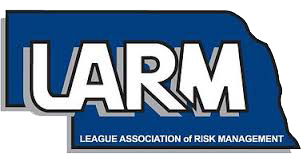
In the world of managing public entities, risk is inevitable. Effective risk management is crucial for the success of any city or village. It involves a structured approach to identifying, evaluating, and mitigating risks. This article is intended to provide a brief overview of these three essential steps in the risk management process.
Step One- Identifying Risks
Risk identification is the first and most critical step in the risk management process. It involves discovering potential risks that could impact the achievement of objectives. The goal is to uncover risks before they materialize, so they can be managed effectively.
Techniques for Risk Identification
- Brainstorming: Engage employees from various departments to generate a list of potential risks. This collaborative approach ensures a diverse range of perspectives. Active and engaged safety committees can play a huge role in this process.
- SWOT Analysis: Evaluate Strengths, Weaknesses, Opportunities, and Threats. This method helps identify internal and external risks related to each aspect of the SWOT framework. Using the SWOT analysis in post-incident debriefs can be very useful.
- Checklists: Use established risk management checklists as a reference. These lists are often based on previous experiences.
- Historical Data Analysis: Review past records and incidents to identify risks that have affected similar situations.
Documentation
Document all identified risks, including:
- Risk Description: A clear and concise explanation of the risk.
- Risk Owner: The person responsible for managing the risk.
- Risk Category: Classification of the risk (e.g., financial, operational, strategic).
- Potential Impact: A description of how the risk could affect objectives.
Step Two- Evaluating Risks
Risk evaluation involves assessing the identified risks to determine their potential impact and likelihood. This step helps prioritize risks based on their severity and probability.
Techniques for Risk Evaluation
- Qualitative Risk Analysis: Assess risks based on their nature and impact without numerical data. This involves rating risks as high, medium, or low in terms of impact and likelihood.
- Quantitative Risk Analysis: Use statistical methods to measure the probability and impact of risks.
When evaluating risks, consider the following factors:
- Likelihood: The probability that the risk will occur.
- Impact: The extent of the effect on objectives if the risk occurs.
- Exposure: The potential for the risk to occur over time.
- Severity: A combination of impact and likelihood.
Step Three- Mitigating Risks
Risk mitigation involves developing strategies to manage or reduce the impact of risks. The objective is to minimize negative outcomes and enhance opportunities.
Strategies for Risk Mitigation
- Avoidance: Change the plan or strategy to eliminate the risk. For example, choosing a process that is less prone to failure.
- Reduction: Implement measures to reduce the likelihood or impact of the risk. This might involve adding safety features or increasing staff training.
- Transference: Shift the risk to another party. This can be done through outsourcing, insurance, or contractual agreements.
- Acceptance: Acknowledge the risk and decide to manage it without taking additional actions. This is typically done when the cost of mitigation exceeds the risk itself.
Develop a Risk Response Plan
Create a Risk Response Plan that outlines:
- Mitigation Actions: Specific steps to reduce risk.
- Contingency Plans: Alternative actions if the risk materializes.
- Monitoring Procedures: Methods for tracking risk and assessing the effectiveness of mitigation strategies.
Effective risk management is vital for the safety of employees and achieving organizational goals. By carefully identifying, evaluating, and mitigating risks, uncertainties can be navigated, and objectives safeguarded. Each step in the risk management process builds on the others, creating a solid framework for managing risks.
